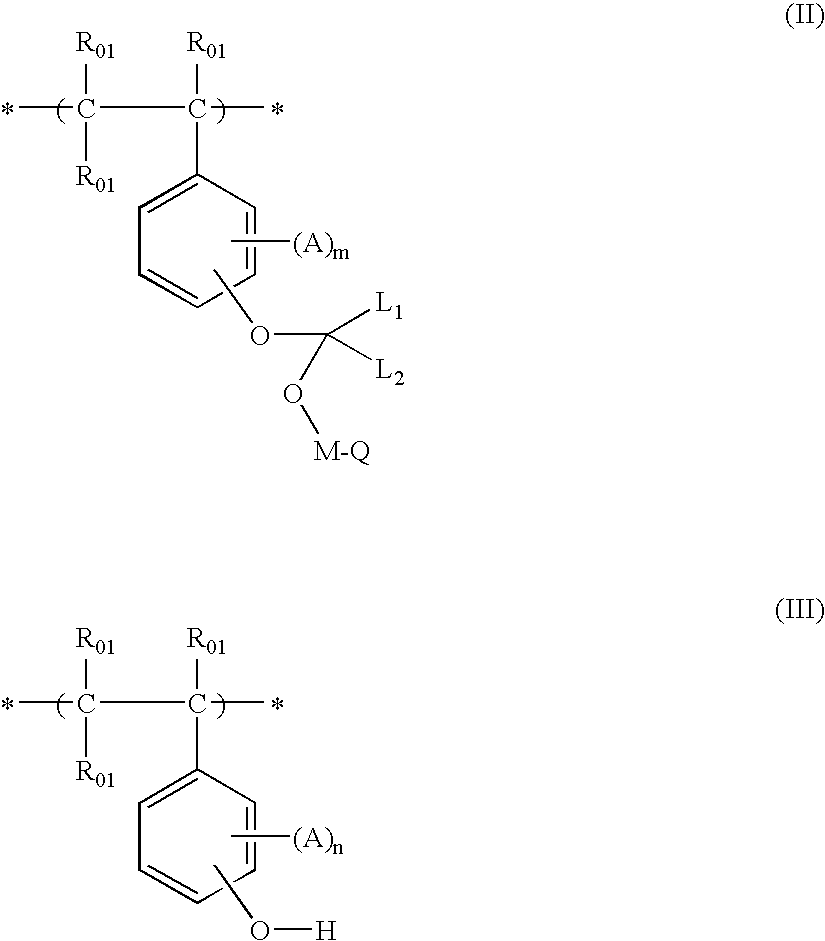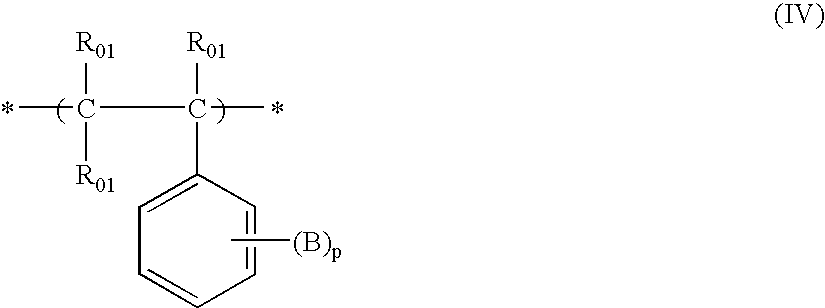Resist composition and pattern forming method using the same
a composition and composition technology, applied in the field of resist composition, can solve the problems of significant pattern falling in the ultrafine region, affecting the yield, and the molecular shape of the polymer compound is reflected on the pattern profile or line edge roughness, so as to achieve the effect of less occurrence of pattern failure and low line edge roughness
- Summary
- Abstract
- Description
- Claims
- Application Information
AI Technical Summary
Benefits of technology
Problems solved by technology
Method used
Image
Examples
examples
i) Preparation of Resist Composition (Example 1)
[0415]
Component B (RA-1)1.255 gAcid generator (z17)0.0759 g Component A (A-38) 0.02 gSurfactant (W-4)0.002 g
[0416] These components were dissolved in a solvent shown in Table 2 below to prepare a solution having a solid content concentration of 6.5 mass %, and this solution was filtered through a 0.1-μm polytetrafluoroethylene-made filter to obtain a resist solution. The resist solutions of other Examples and Comparative Examples were obtained in the same manner as above,
(ii) Production and Evaluation of Pattern (EB)
[0417] The positive resist solution prepared above was uniformly coated on a hexamethyldisilazane-treated silicon wafer by using a spin coater and dried under heating at 120° C. for 90 seconds to form a positive resist film having a thickness of 0.15 μm. This resist film was then irradiated with electron beams by using an electron beam image-drawing apparatus (HL750, manufactured by Hitachi Ltd., accelerating voltage: 50...
PUM
| Property | Measurement | Unit |
|---|---|---|
| roughness | aaaaa | aaaaa |
| carbon number | aaaaa | aaaaa |
| carbon number | aaaaa | aaaaa |
Abstract
Description
Claims
Application Information
 Login to View More
Login to View More - R&D
- Intellectual Property
- Life Sciences
- Materials
- Tech Scout
- Unparalleled Data Quality
- Higher Quality Content
- 60% Fewer Hallucinations
Browse by: Latest US Patents, China's latest patents, Technical Efficacy Thesaurus, Application Domain, Technology Topic, Popular Technical Reports.
© 2025 PatSnap. All rights reserved.Legal|Privacy policy|Modern Slavery Act Transparency Statement|Sitemap|About US| Contact US: help@patsnap.com



